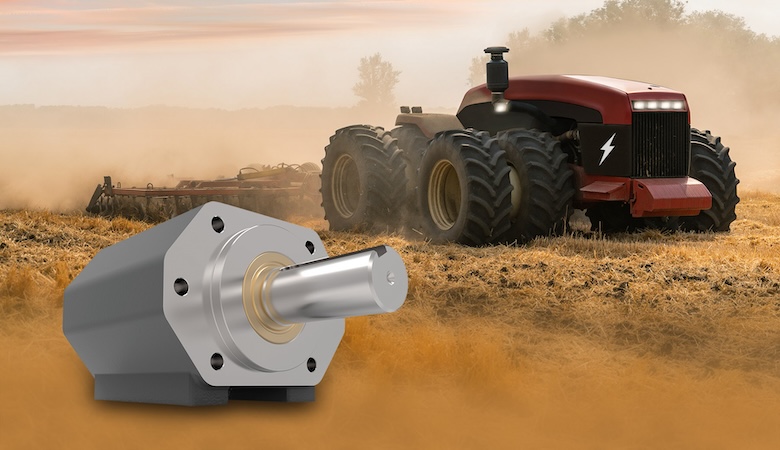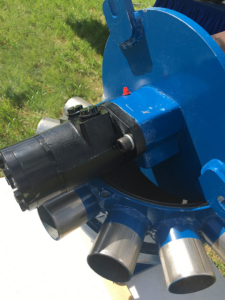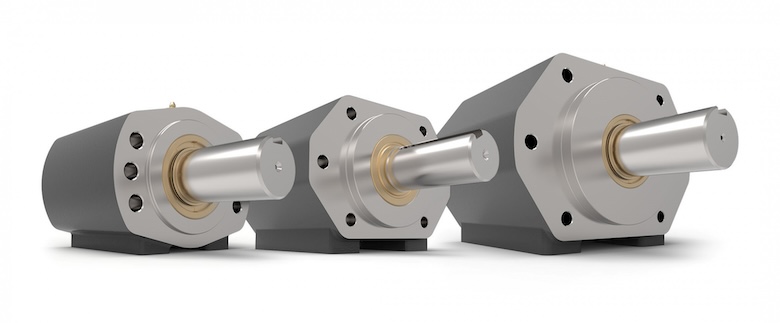Hydraulic motors and pumps with outward-extending shafts can be connected to various driven components, such as pulleys and gears. Overhung loads created by these connections can exert significant radial and axial forces on the hydraulic unit’s shaft and bearings. Overhung load adapters (OHLAs) provide support for these shafts, reducing the load on the internal bearings and helping prevent premature wear and failure. This extends the operational life of the hydraulic equipment and reduces maintenance costs and downtime.

“When bearings aren’t strong enough, they wear, the shaft moves over, and the seal leaks. An OHLA provides bearing support and avoids the shaft moving over and cutting into the seal,” said Mark Treise, applications engineer at Zero-Max. “It also serves as a contamination barrier, protecting the hydraulic motor or pump from the external environment and protecting the hydraulic motor seals from debris, chemicals, water, or sand. It’s a unit that can be replaced or repaired if needed, but the idea is to have a separate component so that you don’t have to break into the hydraulic system.”
Zero-Max has been manufacturing OHLAs for decades, traditionally for hydraulics applications, but the company is now finding opportunities in other areas.

“Our overhung load adapters have always been used on pulleys, then they started getting used a lot on cooling fans or radiator fans on highway equipment, fracking trucks, and mining machinery with axial loads. Now, we’re getting into some new applications and developments within electrification,” said Brian Mishuk, VP of sales and marketing at Zero-Max.
For example, in a grinding application currently in the prototype stage, a grinding stone is attached directly to the output shaft of the OHLA, which is attached to an electric motor. The OHLA handles the axial and radial loads from grinding operations performed by mobile equipment. It also serves as a contamination barrier to prevent the intrusion of grinding dust into the OHLA, which prolongs the system’s life.
“It’s a nasty environment because you have a lot of grinding dust that gets everywhere. It’s very abrasive, so we added some unique sealing features,” said Treise. “We have multiple levels of sealing and purging, so if debris gets past the first seal, we can regrease and purge that before it can get further into the unit.”
Zero-Max’s standard product line is built around SAE standards for hydraulic pumps and motors. However, many electric motors have non-SAE mounting features, NEMA features, and variations that don’t fall into a particular standard. Therefore, the company customizes about 75% of the OHLAs they produce.
As another potential application, OHLAs can be used as a contamination barrier for electric power takeoffs (eptos) that drive auxiliary equipment on mobile machinery.
“If you lose a seal on a hydraulic pump, you can have fairly high pressure going into that unit, and it’ll go right through and flood an engine’s crankcase and seize an internal combustion engine. The same thing can happen with an electric motor. If you start feeding it hydraulic oil under pressure, it will damage the motor and could even be a fire risk,” said Treise. “The overhung load adaptor is a contamination barrier that separates the hydraulic motor from the PTO or, in this case, an electric motor.”
Treise also drills weep holes in the units to help with leakage detection and divert any potential fluid away from the PTO. He can also add a low-pressure check valve so that the oil has another exit path away from the unit.

In the past year, Zero-Max has received increased inquiries for electrification applications, especially for mining and construction equipment. As all industries trend toward electrification, the company expects many more applications for its OHLAs.
“What excites us is that the overhung load adapter is a field-proven product. We’ve evolved our product line, it’s quite extensive, and we’ve always picked up new applications,” said Mishuk. “When we get into electrification, sometimes it’s still a radiator fan, but how we mount to it is different. It requires lots of customization, but at the heart of it, it’s proven technology that’s been solving load problems for a long time.”
Zero-Max
zero-max.com
Filed Under: Components Oil Coolers, Mobile Hydraulic Tips, Pumps & Motors, Technologies, Trending